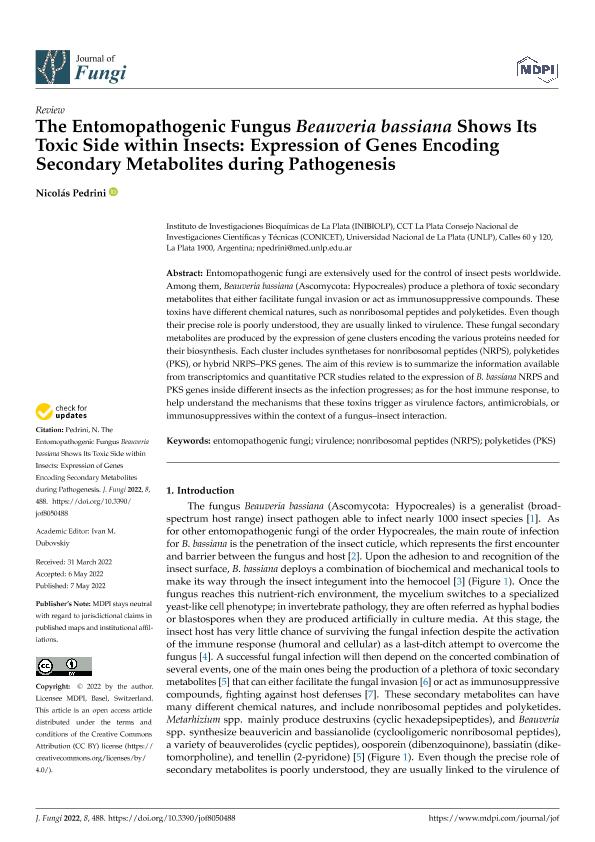Artículo
The Entomopathogenic Fungus Beauveria bassiana Shows Its Toxic Side within Insects: Expression of Genes Encoding Secondary Metabolites during Pathogenesis
Fecha de publicación:
05/2022
Editorial:
Multidisciplinary Digital Publishing Institute
Revista:
Journal of Fungi
e-ISSN:
2309-608X
Idioma:
Inglés
Tipo de recurso:
Artículo publicado
Clasificación temática:
Resumen
Entomopathogenic fungi are extensively used for the control of insect pests worldwide. Among them, Beauveria bassiana (Ascomycota: Hypocreales) produce a plethora of toxic secondary metabolites that either facilitate fungal invasion or act as immunosuppressive compounds. These toxins have different chemical natures, such as nonribosomal peptides and polyketides. Even though their precise role is poorly understood, they are usually linked to virulence. These fungal secondary metabolites are produced by the expression of gene clusters encoding the various proteins needed for their biosynthesis. Each cluster includes synthetases for nonribosomal peptides (NRPS), polyketides (PKS), or hybrid NRPS–PKS genes. The aim of this review is to summarize the information available from transcriptomics and quantitative PCR studies related to the expression of B. bassiana NRPS and PKS genes inside different insects as the infection progresses; as for the host immune response, to help understand the mechanisms that these toxins trigger as virulence factors, antimicrobials, or immunosuppressives within the context of a fungus–insect interaction.
Archivos asociados
Licencia
Identificadores
Colecciones
Articulos(INIBIOLP)
Articulos de INST.DE INVEST.BIOQUIMICAS DE LA PLATA
Articulos de INST.DE INVEST.BIOQUIMICAS DE LA PLATA
Citación
Pedrini, Nicolás; The Entomopathogenic Fungus Beauveria bassiana Shows Its Toxic Side within Insects: Expression of Genes Encoding Secondary Metabolites during Pathogenesis; Multidisciplinary Digital Publishing Institute; Journal of Fungi; 8; 5; 5-2022; 1-9
Compartir
Altmétricas




